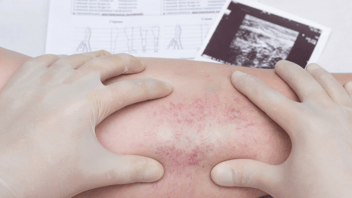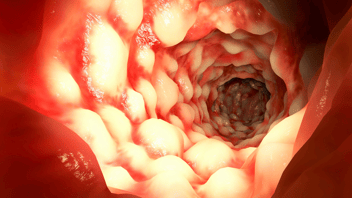You'll Need to Know This about Pelvic Inflammatory Disease (PID) for the NCLEX Exam

Learning about Pelvic Inflammatory Disease (PID)
Pelvic inflammatory disease (PID) is a complex and concerning condition that impacts the female reproductive system. Characterized by inflammation and infection of the uterus, fallopian tubes, and other pelvic organs, PID can lead to a range of distressing symptoms.
These may include pelvic pain, abnormal vaginal discharge, painful urination, and even fever. If left untreated, PID can result in serious complications, including infertility, chronic pelvic pain, and an increased risk of ectopic pregnancies.
Early diagnosis and appropriate treatment, usually involving antibiotics, are crucial in managing PID and preventing its potential long-term effects. Regular gynecological check-ups and practicing safe sexual behaviors are key to reducing the risk of PID and its associated complications.
.png?width=1200&height=630&name=nclex%20review%20for%20angina%20(2).png)
Pelvic Inflammatory Disease (PID) is a significant concern for nursing students to comprehend thoroughly. PID is an infection of the female reproductive organs primarily the uterus, fallopian tubes, and ovaries, and is often caused by sexually transmitted infections. Knowing the causes, risk factors, complications, and how to manage is essential.
Overview on Acute Pelvic Inflammatory Disease (PID)
Pelvic inflammatory disease is an infection of the female reproductive tract, it’s caused by alterations in the cervical mucus, which can be fatal if untreated.
1. Infection of reproductive tract → moves to the pelvis and bacteria moves to the uterine cavity and leads to inflammation and scarring
2. Causes→ STDs (most common), vaginal flora overgrowth, infection of pelvic structures
3. Risk factors are risky sexual practice, multiple sexual partners, recent IUD (foreign body) placement, and history of STD
4. Complications→ Infertility, ectopic pregnancy, and
sepsis/death
Nursing Assessment for Pelvic Inflammatory Disease (PID)
1. Assessment
a. Abdominal pain
b. Abnormal vaginal bleeding/discharge→ Spotting, yellow or green vaginal discharge
c. Pain with urination, intercourse
d. Fever / chills / malaise
Diagnosis:
Diagnosis is based on clinical history, physical exam, and lab tests which include gram stain to identify the organism and a culture and sensitivity to choose the right antibiotic.png?width=1200&height=630&name=nclex%20review%20for%20angina%20(2).png)
Therapeutic Management for Pelvic Inflammatory Disease (PID)
1. Interventions
a. Antibiotics
b. Pain control with mild analgesics – NSAIDs
c. Positioning → Semi-fowler’s to help with drainage of infection
Nursing Case Study for Pelvic Inflammatory Disease (PID)
Patient Profile:
Name: Ms. Anita GomezAge: 25 years old
Gender: Female
Medical History: None reported
Presenting Symptoms:
- Lower abdominal pain and tenderness
- Abnormal vaginal discharge
- Painful urination
- Low-grade fever
Medical Examination and Diagnostics:
- Physical Examination: Ms. Gomez displayed tenderness in the lower abdomen, especially on pelvic examination
- Laboratory Tests: Elevated white blood cell count and erythrocyte sedimentation rate, indicative of inflammation
- Pelvic Ultrasound: Showed fluid accumulation around the ovaries and fallopian tubes
Medical History:
Ms. Gomez had no significant medical history, but her symptoms suggested a possible pelvic infection
Diagnosis:
Ms. Gomez was diagnosed with pelvic inflammatory disease (PID), an infection of the female reproductive organs.
Treatment Plan:
Initiated broad-spectrum antibiotics to cover the likely causative organisms and manage the infection
2. Pain Management:
Administered analgesics to alleviate pelvic pain and discomfort
3. Sexual Partner Notification:
Advised Ms. Gomez to notify her sexual partners about her diagnosis to prevent reinfection
4. Education and Counseling:
Educated Ms. Gomez about PID prevention, proper hygiene, and the importance of completing the full course of antibiotics
Outcome:
With prompt medical intervention and nursing care, Ms. Gomez’s symptoms improved significantly. Her abdominal pain and tenderness decreased, and her vaginal discharge normalized. She completed the full course of antibiotics as prescribed and showed a better understanding of preventive measures.
Conclusion and Free Download
This Pelvic Inflammatory Disease (PID) review provides essential knowledge for confidently approaching the NCLEX. Understanding its prevention, management, and interventions empowers nurses to provide effective care and save lives.
Looking for more must-know NCLEX review topics? Download our free eBook, "NCLEX Flash Notes: 77 Must-Know Nursing Topics for the NCLEX," by simply providing your email address below. I'll send you a complimentary copy straight to your inbox!
.png?width=1200&height=630&name=nclex%20review%20for%20angina%20(2).png)
You CAN Do This
Happy Nursing!








